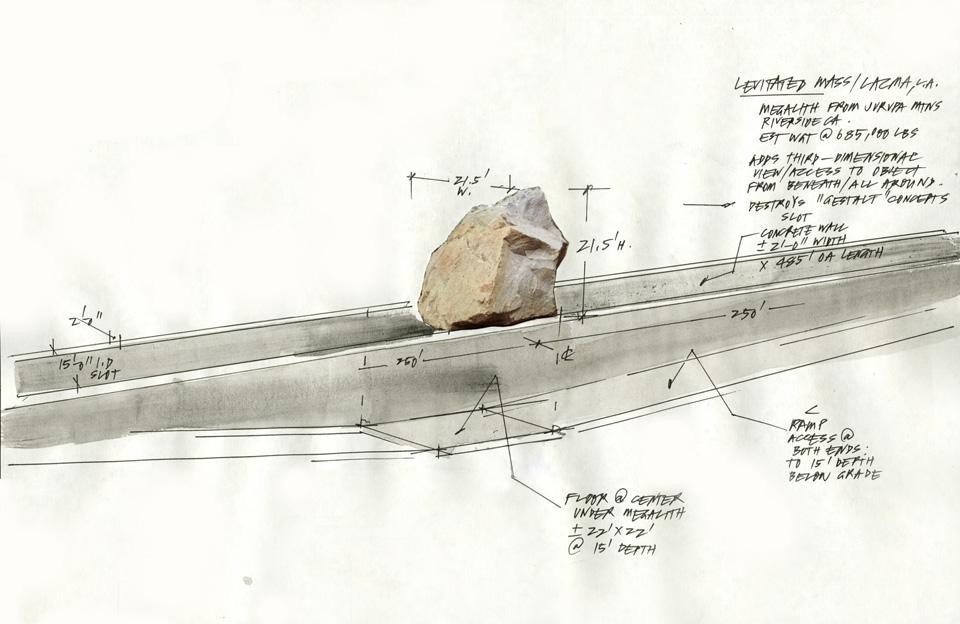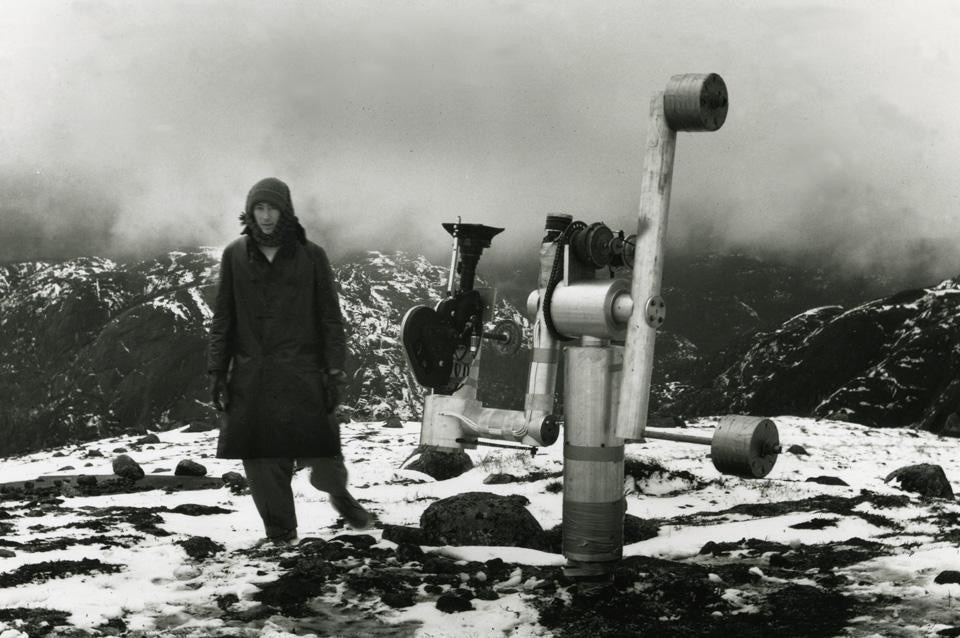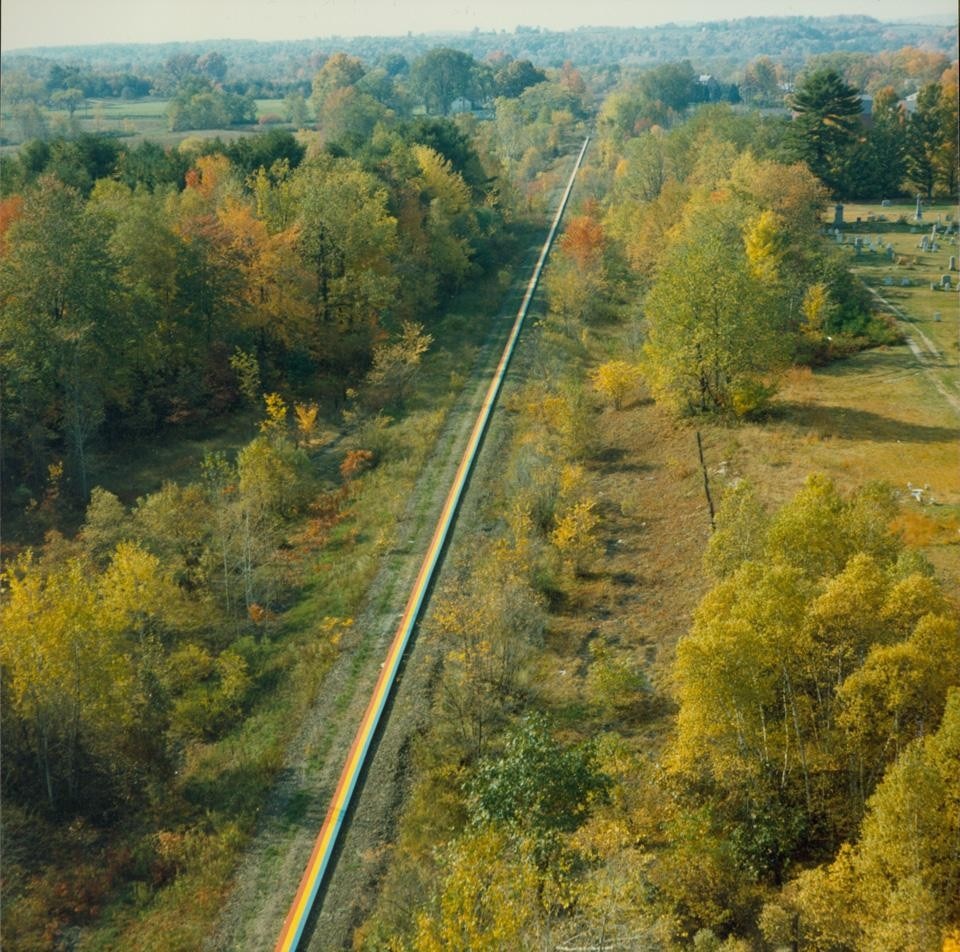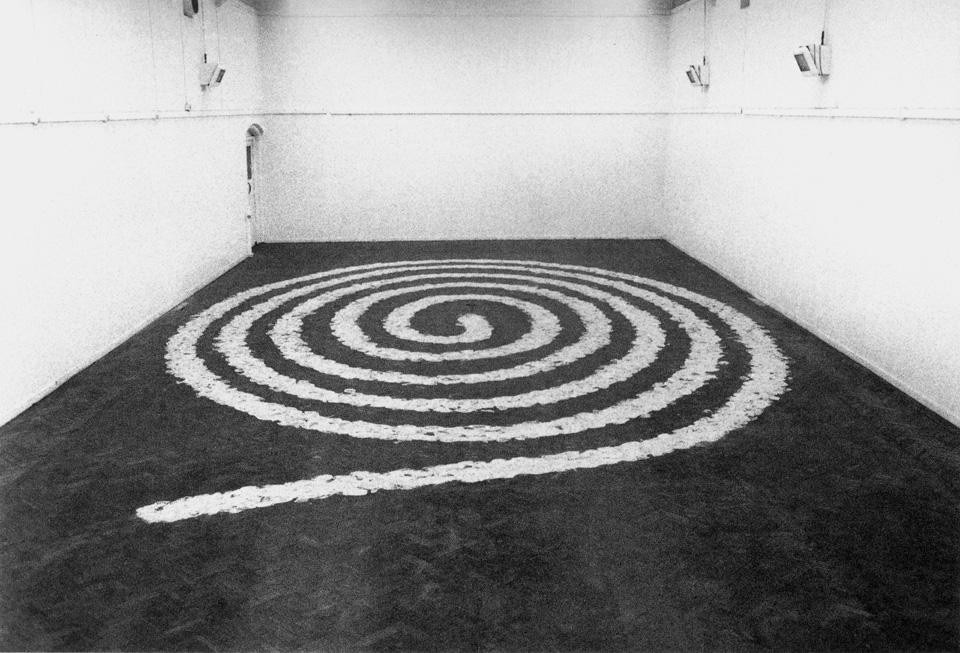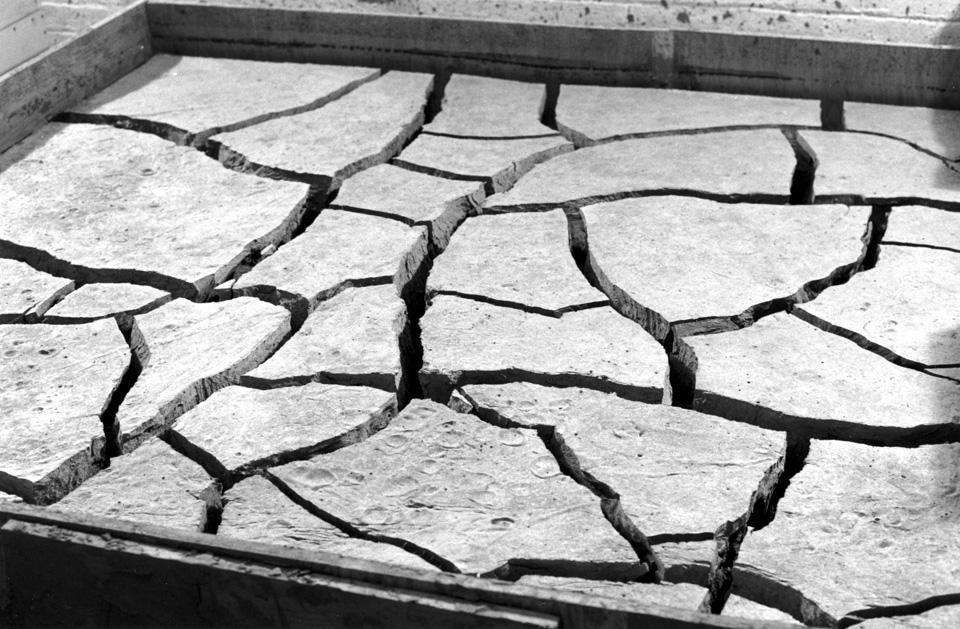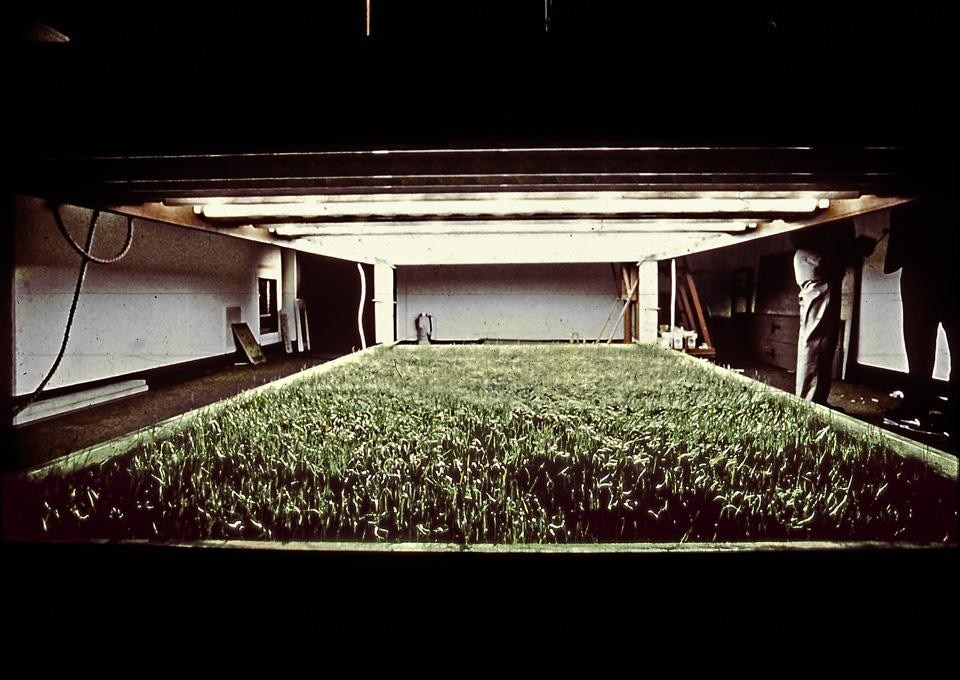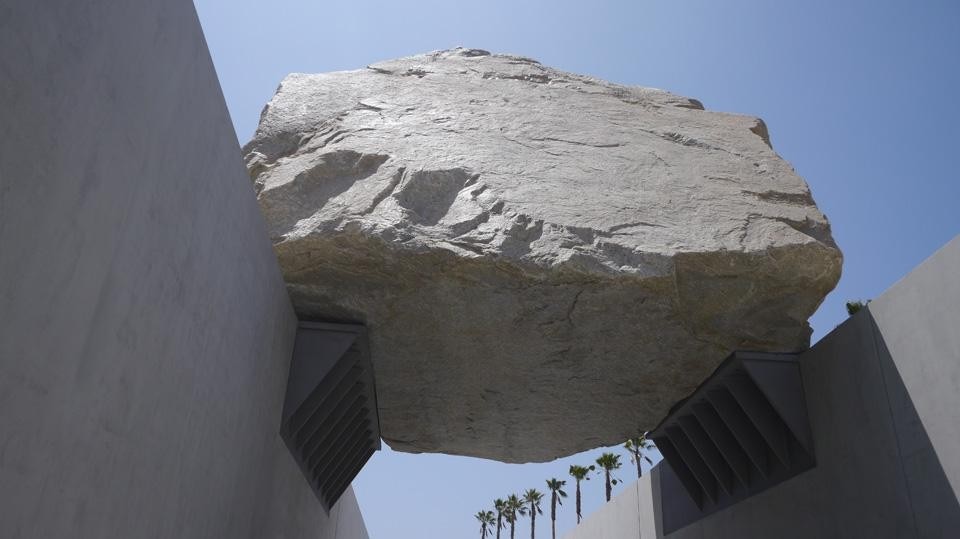Vidler outted the collage fragment depicting Earth that looms above at the top of the composition, noting that it was torn from a 1955 issue of Life. As this view of the world entered into mainstream public consciousness via the most popular magazine on the planet it carried with it the tension between rampant consumerism and the Cold War. Entitled a 100 Mile Portrait of Earth, the composite photograph was made from stills taken by an aerial movie camera attached to a rocket. At the time, no other color photo had ever been taken from such a high vantage point.
This popularization and implied democratization of a once-privileged view mixes with a Cold War chill in the exhibition Ends of the Earth: Land Art to 1974 at MOCA's The Geffen Contemporary in Los Angeles. This broad, historical retrospective brings together a generation of artists working under threat of nuclear annihilation, the space race, who possessed an expansionist drive to push outside of the gallery and into the unknowns of landscape.
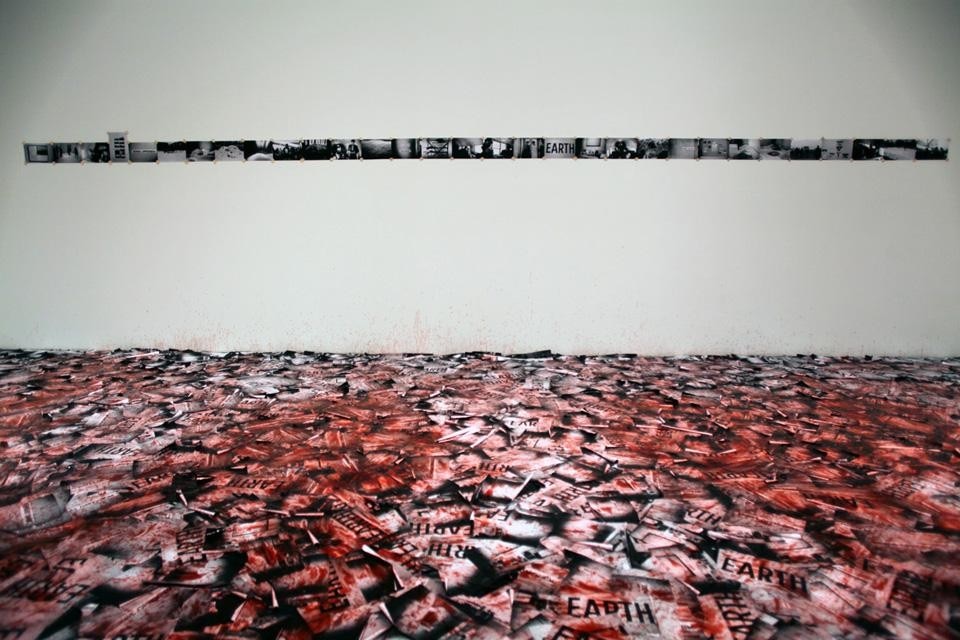
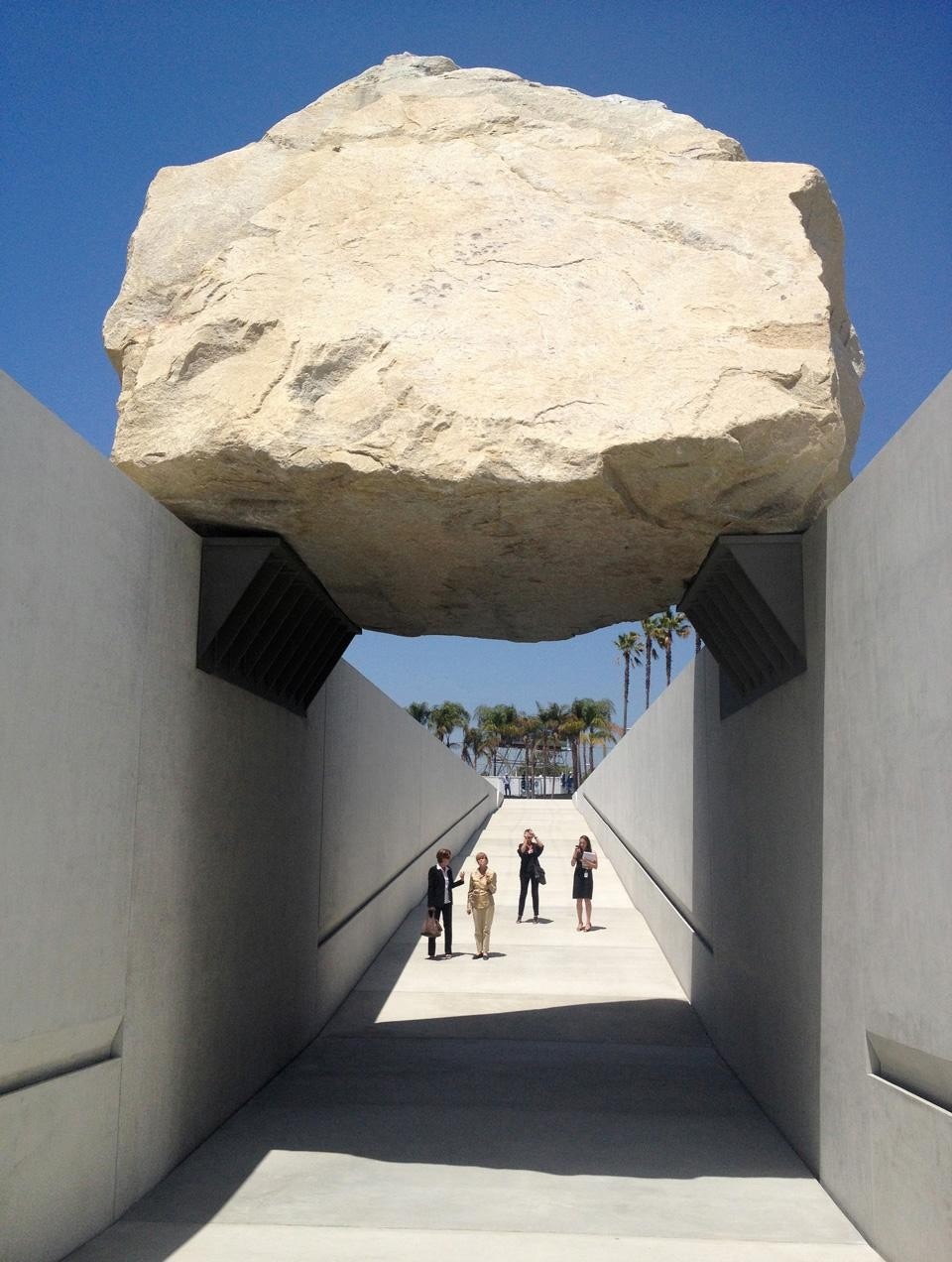
Kaiser and Kwon’s curation underscores the connection between media practice and land art, mending a historic link that was forgotten as the massive works, such as Michael Heizer’s monumental excavation Double Negative (1969–70), included in MOCA’s permanent collection, took centre stage in the public imagination in the past few decades
